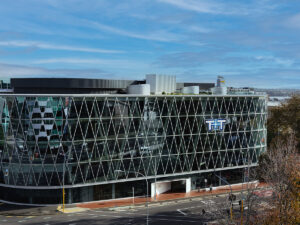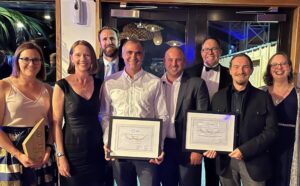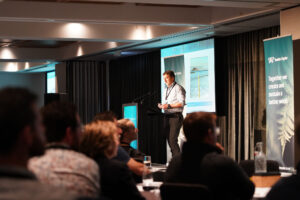Australasian Coasts & Ports 2021 Conference, Christchurch
River mouths are often highly dynamic environments, fluctuating in location and depth with riverine and coastal processes. Where river training structures restrict the river to a fixed location, these structures must be protected against the effects of scour occurring within the main channel. Show more…One possible toe protection method is to construct a “falling toe” (or “falling apron”) to launch material onto the developing slope formed by the scour. Data from physical model studies and field installations are limited, making it difficult to assess the general behaviour of the falling toe during the scour process and therefore the optimal placement volume and geometry.
This paper describes a physical model study undertaken at the University of Auckland Fluid Mechanics Laboratory to investigate the performance of the toe armour during scour, and to document the scour development (and the response of the falling toe) during several experiments. The physical model study was undertaken at a geometric scale of 1:30 within a recirculating hydraulic flume. Time-dependent scour depth measurements obtained using an array of acoustic sensors and time-lapse photograph observations are combined with photogrammetry and post-test excavations to gain a complete understanding of the behaviour of the falling toe in response to scour of the channel test section.
As the scour developed within the channel, the falling toe was launched to create a 1:2 slope protected by a single layer of armour material, irrespective of the presence of an underlayer. The toe of the armoured slope was periodically buried and uncovered by bedforms under live-bed conditions. The amount of crest retreat was governed by the scour depth and the number of armour layers providing material to the protected slope. Scale and model effects are discussed along with general principles for design.Show less…




















